How to Use a Heated Mattress Pad: Your Complete Q&A Guide
Is the nighttime temperature unusually chilly? Is it logical to bury your head under the blanket to gain warmth? Consider purchasing heated pads for the mattress. With these ingenious devices, you'll find it simpler and more affordable to sleep through the night.
Additionally, it softens and improves your sleep all night long. We'll go in-depth about the heated mattress pad, are heated mattress pads safe and how it can make you more comfortable. Then, we'll demonstrate how to pick the ideal mattress pad. We will also discuss how to use a heated mattress pad, how heated mattress pads work, and much more. Let's get started.
Q1: Are heated mattress pads safe?
If done correctly, heating mattresses are entirely secure. This will ensure that a pad doesn't overheat. Usually, pads have temperature settings so you can choose the temperature you want. Using timers to prevent the pad from being on for an extended period of time can also be helpful.
For pregnancy, heated mattress pads are generally safe if used on low settings and for short periods. Always consult with healthcare provider for personalized advice and safety recommendations.
For children, if they follow the safety guidelines, a heated mattress pad will help keep them comfortable. If your kid is too hot, they won't be able to communicate your feelings to you; thus, you might not want to use this product on youngsters under five. Parents should be able to arrange the device's temperatures with the pads so their kids can monitor it. Look for pads with security measures like timers or automatic offing.
Q2: What are the benefits of heating mattress pads?
Heated mattress pads offer a variety of benefits, making them a popular choice for those seeking a comfortable and restful night's sleep. Here are some of the advantages of using heated mattress pads:
- ☀️ Warmth and Comfort: The most obvious benefit is their added warmth and comfort during cold nights, helping you stay cozy and relaxed.
- 😴 Improved Sleep Quality: Gentle heat helps relax muscles, reducing tossing and turning for a more restful sleep.
- 😣 Pain Relief: Heat therapy can soothe muscle aches, arthritis, and joint stiffness by promoting better blood circulation and relaxing tense muscles.
- 🔧 Customizable Heat Levels: Most come with adjustable temperature controls, providing warmth and allowing you to find the perfect level for your preferences.
- 👥 Dual Controls: Some models offer dual controls for queen and king-sized beds, allowing each person to set their perfect temperature independently according to their preference.
- ⚠️ Safety Features: Equipped with automatic shut-off timers and overheat protection to ensure your safety.
- 🌎 Energy Efficiency: Can lower your home's overall heating temperature, saving energy bills while providing targeted warmth.
- 💦 Easy Maintenance: Many heated mattress pads are machine-washable for hassle-free cleaning. Always follow manufacturer instructions to ensure longevity and safety.
Q3: How do heated mattress pads work?
Q4: What is better, a heated mattress pad or blanket?
Q5: Factors to consider when choosing a heated mattress pad
These are a few key characteristics that the heating pad for mattresses must have:
- ☑️ Materials: A variety of materials, including cotton, polyester, microfiber, and mixtures of various materials, are typically used in the production of heated beds. Typically, the heating element is made of fine wire woven into the pad's fabric.
- ☑️ Appropriate Cord Length: Your heated mattress pad must have a good cord length so you can easily plug it into the socket when placed on the bed. Otherwise, you will create a mess of wires with extension leads in your bedroom.
- ☑️ Heat Settings: Ensure your heated mattress pad has several heat settings so you can adjust heat levels according to the requirements.
- ☑️ Auto Shut OFF: It must have an automatic shutting-off system so you can sleep in it worry-free. All you have to do is pre-adjust, shut off timing, and sleep without worrying about overheating.
- ☑️ Machine Washable: It’s one of the most important features to look for. Your heated mattress pad must be machine-washable. Such pads often come with water-proof wire insulations.
Q6: How long does it take for a heated mattress pad to heat up?
The time it takes for a heated mattress pad to heat up can vary depending on several factors, including the specific model, the heat setting you choose, and the ambient room temperature. Generally, a heated mattress pad can take anywhere from a few minutes to around 10 minutes to reach its maximum temperature.
Here are some factors that can influence heating time:
- Heat Setting: Higher heat settings generally heat the pad faster than lower settings. If you choose the highest setting, you'll feel the warmth more quickly.
- Power of the Mattress Pad: The wattage and power of the heated mattress pad can affect how quickly it heats up. Higher-wattage pads can often heat up faster.
- Ambient Room Temperature: If your room is very cold, it may take longer for the mattress pad to reach the desired temperature. Conversely, in a warmer room, it may heat up more quickly.
- Insulation: Some mattress pads are designed with better insulation, which can help them heat up faster and retain heat more efficiently.
- Brand and Model: Different brands and models of heated mattress pads may have varying heating elements and technologies, leading to different heat-up times.
Q7: Do heated mattress pads use a lot of electricity?
A heated mattress pad typically uses 100-250 watts per hour, which costs approximately $0.016 to $0.0412 per hour at the average U.S. electricity rate of $0.1648 per kWh (based on 2024 data from the U.S. Energy Information Administration). This translates to less than 5 cents per hour to run, making it both an energy-efficient and cost-effective option for staying warm.
Q8: How long do heated mattress pads last?
The lifespan of a heated mattress pad can vary depending on several factors, including the quality of the product, how well it's maintained, and how frequently it's used. On average, a good-quality heated mattress pad can last five to ten years or even longer with proper care. Here are some factors that can influence the longevity of a heated mattress pad:
- Quality of the Product: Higher-quality heated mattress pads, typically from reputable brands, tend to have better construction and components that can withstand regular use for longer.
- Maintenance: Proper care and maintenance can significantly extend the lifespan of a heated mattress pad. Follow the manufacturer's care instructions, which may include regular cleaning and storage when not in use.
- Frequency of Use: If you use your heated mattress pad daily, it may wear out more quickly than one that's only used occasionally. Pads used seasonally may last longer.
- Heat Settings: Running the mattress pad on high heat settings for extended periods can put more strain on the heating elements and potentially shorten its lifespan. Using lower or medium settings may prolong its life.
- Overheating Prevention: Many modern heated mattress pads have automatic shut-off timers to prevent overheating. This safety feature not only ensures your safety but also helps preserve the pad's lifespan.
- Warranty: Some heated mattress pads come with warranties indicating the manufacturer's confidence in the product's durability. Be sure to check the warranty information when purchasing.
- Proper Storage: If you store your heated mattress pad during the warmer months, ensure it's stored in a dry and cool place, away from moisture and direct sunlight.
- Inspect for Wear and Tear: Regularly check your heated mattress pad for signs of wear, such as fraying wires or damage to the heating elements. If you notice any issues, discontinue use and consider replacing it.
Q9: How to wash a heated mattress pad?
Cleaning your heated mattress pad is an important part of its maintenance to ensure it stays in optimal condition. Here are general steps to clean your heated mattress pad:
Materials Needed before Cleaning:
- 🧴 Mild detergent (liquid, not powder)
- 💦 Lukewarm water
- 🛁 A large basin or bathtub
- 🧽 Soft cloth or sponge
- 🧺 Clean, dry towels
Cleaning Steps:
- Unplug and Disconnect: Ensure the mattress pad is unplugged and disconnected from the power source. For some models, you may need to detach the control unit and cords from the pad.
- Check Manufacturer's Instructions: Read the care instructions provided by the manufacturer. This information will guide you on the specific cleaning recommendations for your mattress pad.
- Spot Clean Stains: If there are any visible stains or spills on the mattress pad, spot-clean them using a mixture of lukewarm water and detergent. Use a soft cloth or sponge to scrub the stained area gently. Avoid excessive moisture on the pad.
- Hand Wash or Machine Wash: You can hand or machine wash the mattress pad, depending on the manufacturer's recommendations. If machine washing is allowed, use a front-loading washer with a gentle cycle. Avoid top-loading agitator washers, as they can damage the pad.
- Use Mild Detergent: When washing, use a mild liquid detergent and follow the recommended dosage on the detergent label. Avoid using bleach or harsh chemicals, which can damage the heating elements.
- Rinse Thoroughly: After washing, rinse the mattress pad thoroughly to remove all detergent residue. This is important to prevent skin irritation and damage to the pad.
- Drain and Squeeze: Gently squeeze out excess water from the mattress pad without wringing or twisting it, as this can damage the heating elements.
- Dry Properly: Follow the manufacturer's drying instructions. Some heated mattress pads are safe to tumble dry on low heat, while others may need to be air-dried. Placing the pad flat on a clean, dry towel can help absorb excess moisture during air drying.
Q10: Can you leave a heated mattress pad on all night?
It’s generally not recommended to leave a heated mattress pad on all night. Continuous use can pose overheating and safety risks. Instead, preheat your bed before sleeping and then turn off the pad. Always follow the manufacturer’s safety guidelines and ensure the pad is in good working condition.
Q11: How do you put a heated mattress pad on the bed?
Heated mattress pads are pretty easy to install, just like any other skirted mattress pad. All you need to do is lay it over your bed with the heating side and charger plugin facing upwards. Secure it in place using the attached straps or elastic bands. Now, connect the controller, adjust heat settings, and that’s it! You are all set to enjoy the warmth!
Q12: Can you use heated mattress pad on memory foam?
Heat us shouting NO! Here are several reasons:
- Material Sensitivity: Memory foam is prone to heat changes. This is the main reason why they mold into our bodies' shapes. However, when exposed directly to the heating mattress pads, these foams can get damaged and deteriorate in shape. Over time, repeated exposure to direct heat can cause the memory foam to deteriorate more quickly, leading to a loss of its supportive qualities.
- Potential Damage: Direct heat can cause the foam to break down at a faster rate, reducing the mattress’s lifespan. It might also cause discoloration or create permanent impressions in the foam.
- Compromised Performance: Memory foam’s unique viscoelastic properties are designed to react to your body heat and pressure. Adding an external heat source can interfere with this natural process, leading to inconsistent support and comfort.
Q13: Can you use a heating pad on an air mattress?
Yes, heating pad doesn't damage air mattresses, but you should follow these guidelines:
- Insulation: Place a blanket or thick sheet between the heating pad and the air mattress to prevent direct contact. This helps protect the air mattress from potential damage caused by concentrated heat.
- Temperature Control: Use a heating pad with adjustable settings and keep it at a low or moderate temperature to avoid overheating the air mattress, which could cause it to become too warm or even melt.
- Monitoring: Always monitor the heating pad while in use and never leave it on overnight or unattended to prevent any risk of fire or damage.
Q14: Can I use a heating pad on a gel mattress?
Q15: Does a heated mattress pad go under the sheet?
Yes, it is recommended to use a fitted sheet or a mattress protector over a heated mattress pad for several reasons:
- Protection: Placing a sheet or mattress protector over the heated mattress pad helps protect it from spills, stains, and general wear and tear. This added layer can extend the lifespan of your heated mattress pad.
- Comfort: Sheets provide a comfortable barrier between you and the heating elements of the pad, ensuring a more comfortable sleep experience. Some people find direct contact with the heating elements to be less pleasant.
- Hygiene: Sheets are easier to clean and replace than the heated mattress pad. Regularly washing your sheets can help maintain a clean and hygienic sleep environment.
Q16: Does a heated mattress pad go under a mattress protector?
YES! You can put a mattress protector over your heated mattress pad. There is no need to fear melting or burning your mattress protector. Here’s why:
- Protection: Placing the mattress protector over the heated pad protects both the mattress and the pad from spills, sweat, and other potential contaminants.
- Safety and Comfort: The mattress protector can help distribute heat more evenly and provide an additional layer of insulation, making the heating more efficient and comfortable.
- Maintenance: It simplifies cleaning and maintenance because you can remove and wash the mattress protector without disturbing the heated pad.
Q17: Does the electric heated mattress pad go under or over the regular non-heated pad?
The electric heated mattress pad should go under the regular non-heated mattress pad or any other mattress topper. Placing it underneath ensures the heat distributes evenly and prevents direct contact with the heating elements, which adds comfort and extends the lifespan of the pad. Also, having a layer above it can protect the heated pad from wear and tear. Just make sure to follow the manufacturer’s instructions to ensure safe usage.
Q18: What if I use a heating mattress pad under my duvet?
Yes, you can use a heating mattress pad under a duvet, but read the instructions carefully before purchasing. They also feature heating wires, so you should follow the usage guidelines cautiously.
Q19: Can you use a feather quilt with an electric mattress pad?
Yes, you can generally use a feather quilt with an electric mattress pad, but there are a few considerations to ensure safety and comfort:
- Temperature Control: Feather quilts provide excellent insulation, so using them with an electric mattress pad could make the bed quite warm. Start with a lower heat setting on the pad to avoid overheating.
- Even Heat Distribution: Feather quilts can trap heat unevenly. Make sure the electric pad distributes heat evenly to prevent hot spots.
- Follow Manufacturer’s Guidelines: Some electric mattress pads come with specific instructions on bedding compatibility, so check for any restrictions regarding heavy or highly insulating covers like feather quilts.
- Safety Precautions: Ensure that the electric mattress pad is in good condition, without any frays or exposed wiring, and that it’s being used as directed to prevent overheating issues.
Q20: Can you use a heated mattress pad with grounding sheets?
Yes, you can use a heated mattress pad with grounding sheets. The electrical charge generated by the heated mattress pad can accumulate in your body, but using a grounding sheet on top can help neutralize this charge, grounding your body and reducing potential harm.
However, it’s important to ensure that both are compatible and safe to use together. Here are a few key points to consider:
-
Safety First: Always check the manufacturer’s guidelines for both the heated mattress pad and grounding sheets. Some grounding sheets may not be recommended for use with electrical devices due to potential interference or safety risks.
-
Separate Circuits: To avoid electrical overload or safety hazards, ensure that the heated mattress pad and grounding sheet are on separate electrical circuits.
-
Material Compatibility: Grounding sheets often use conductive materials, like silver threads, which could interfere with the heat settings on the mattress pad. Make sure the materials are compatible and designed for safe use together.
Q21: Do heated mattress pads cause cancer?
If you're looking to buy a heated mattress pad, Homlyns is a great option. We offer quality, durable heated mattress pads designed for comfort and safety.
Conclusion
In this article, we have discussed the benefits of heated mattress pad, how to select a heated mattress pad and so on. We have also discussed whether heated mattress pads are safe or not. Do read this article to learn more about using the heated mattress pad.
We will regularly review your comments and incorporate relevant answers into our articles. Please check back to read our responses!
Edit History
Oct 5, 2023
Published
Mar 13, 2025
- Updated with additional customer questions and answers, along with insights from People Also Ask (PAA) on Google.
- Revised electricity cost data for the heated mattress pad based on the latest 2024 information from the U.S. Energy Information Administration (EIA)




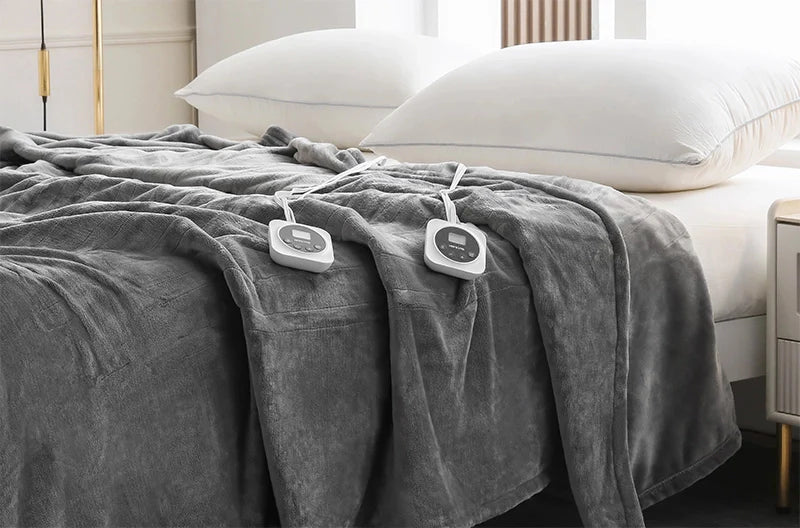
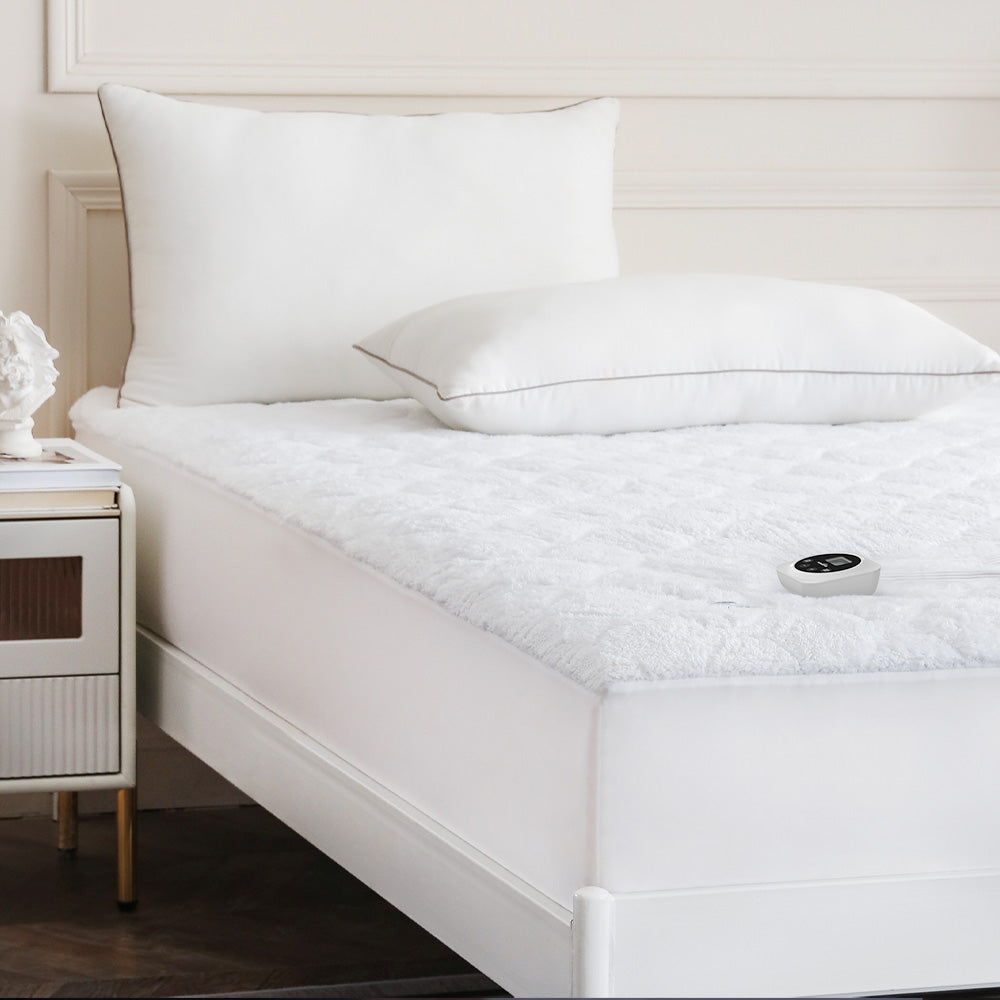
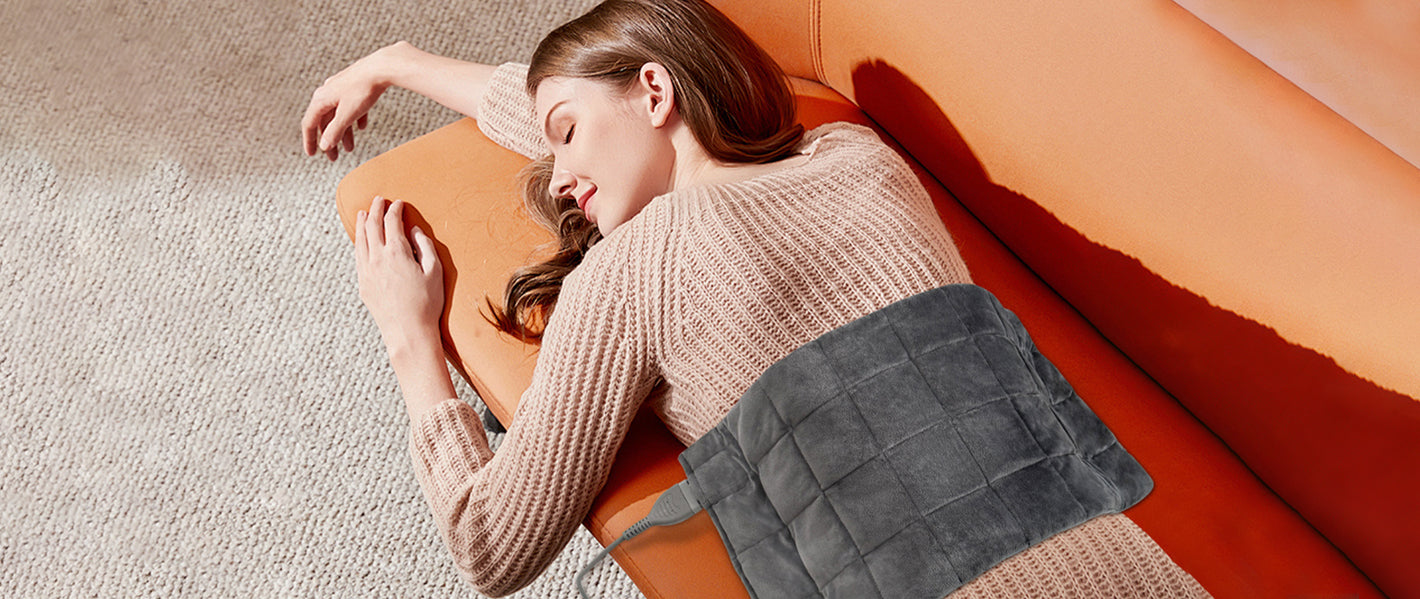
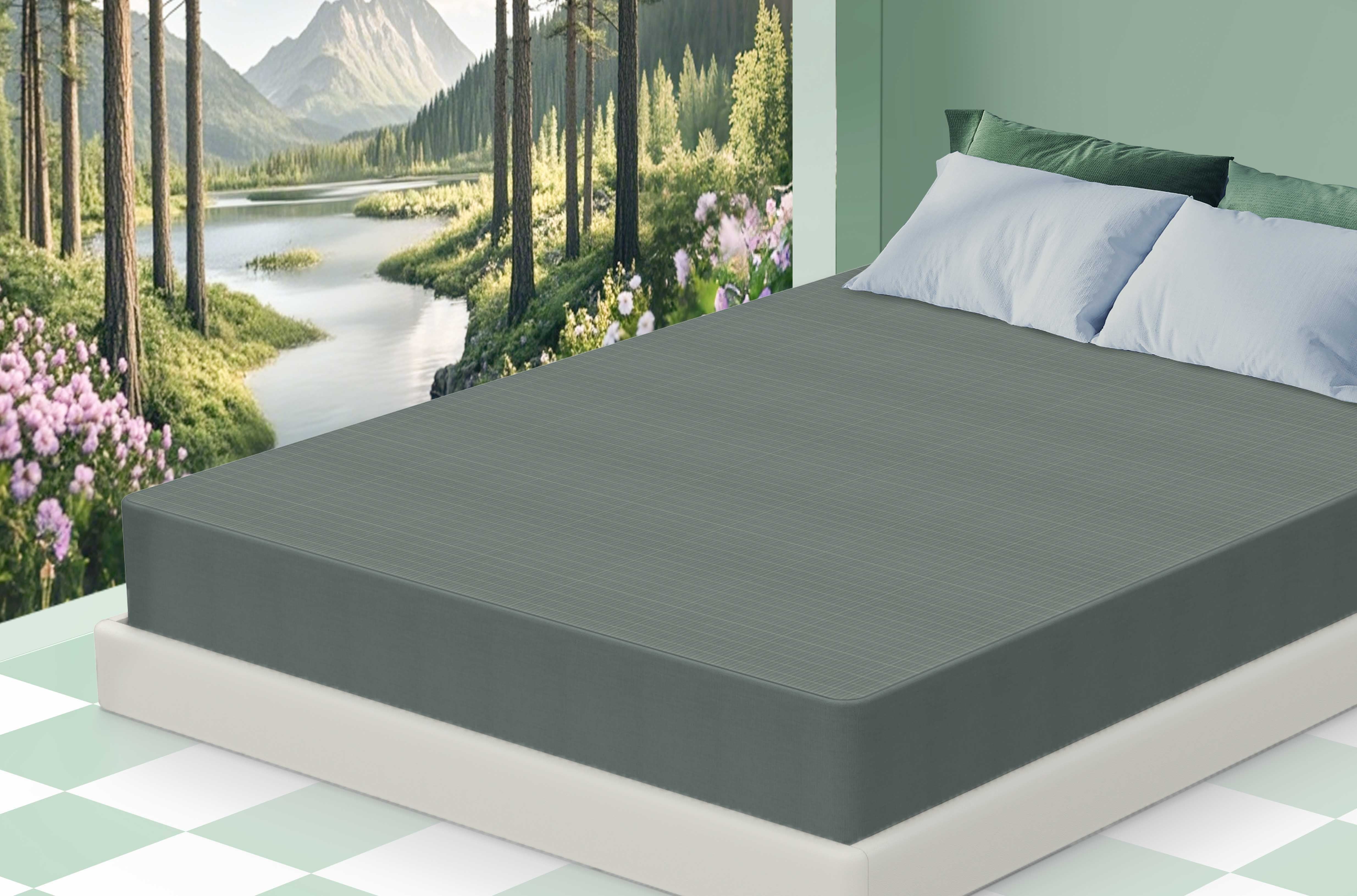
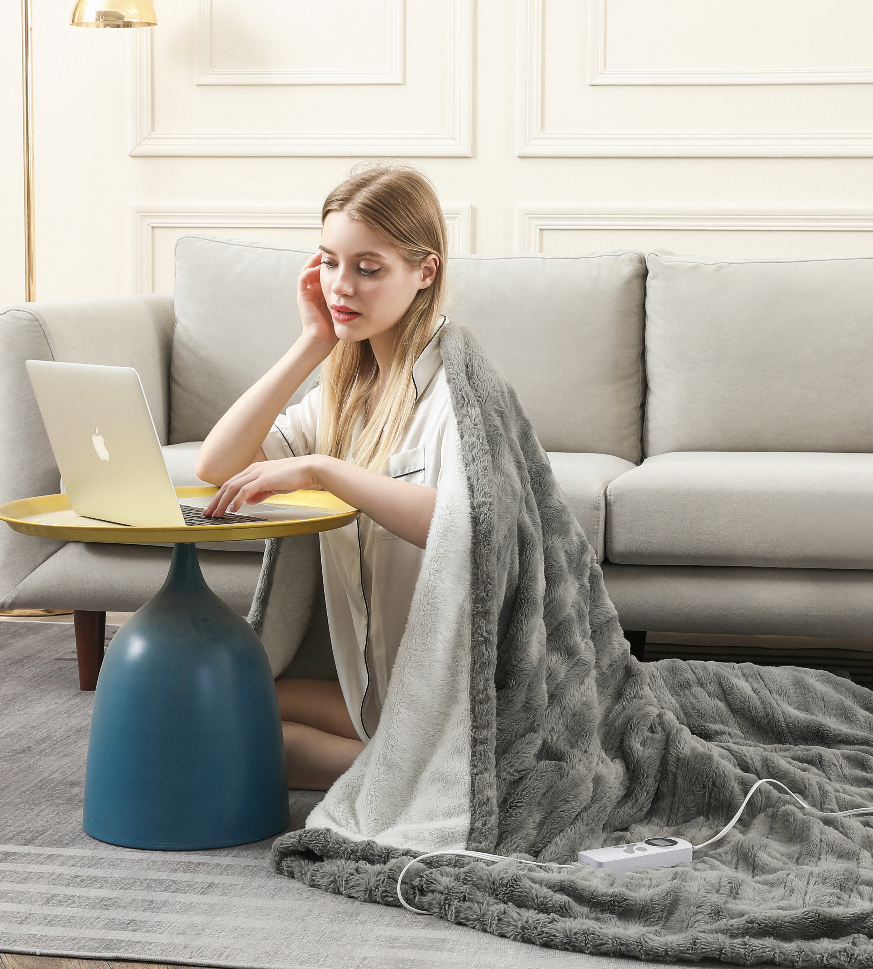



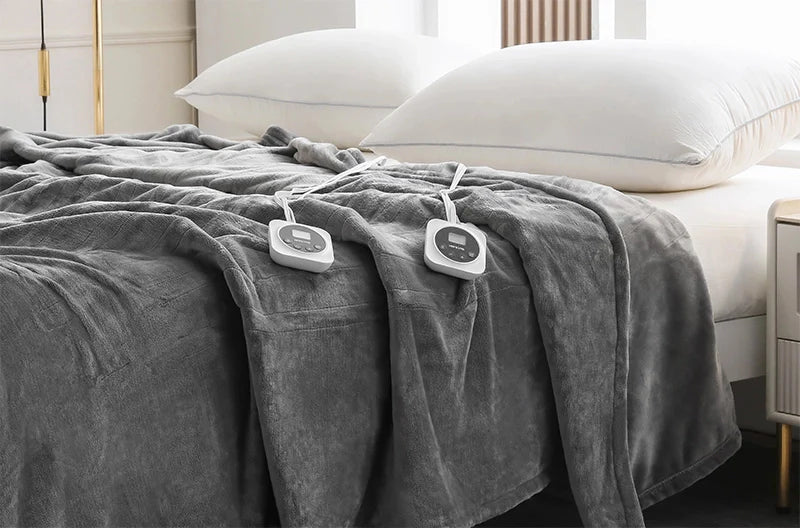
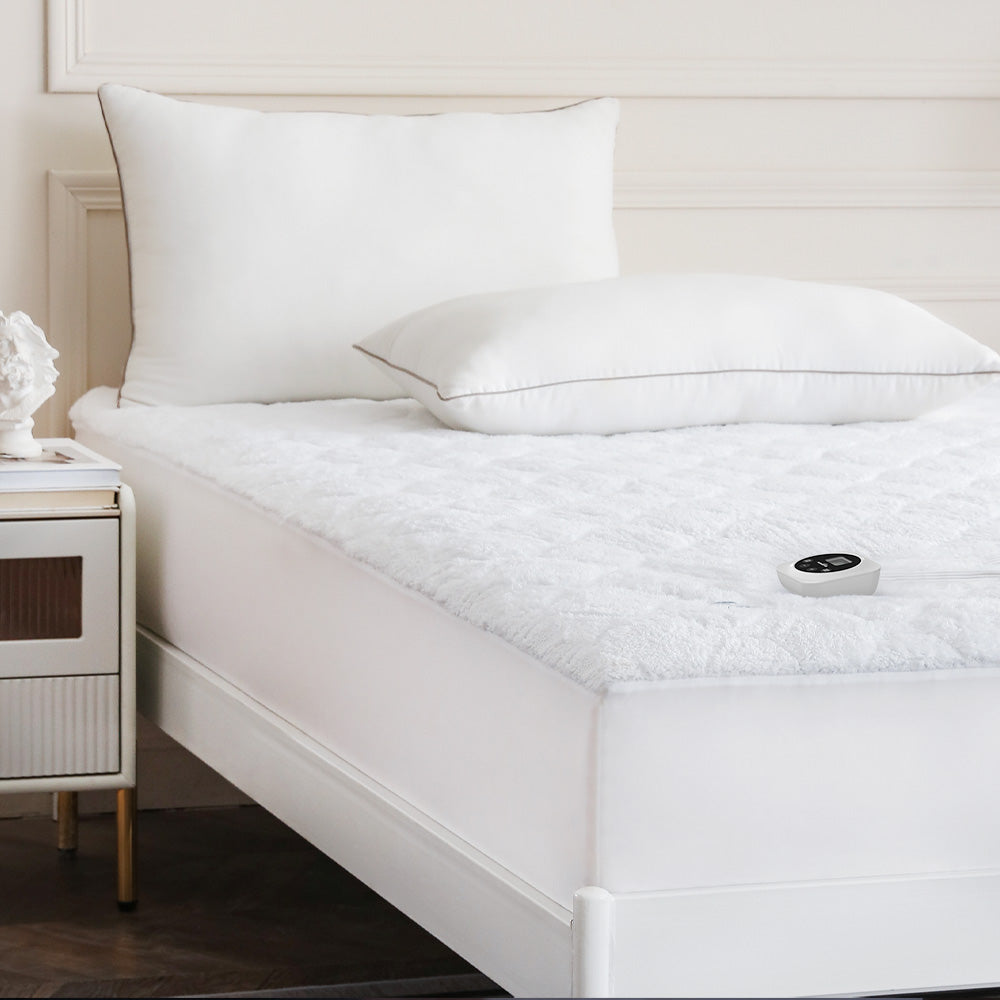
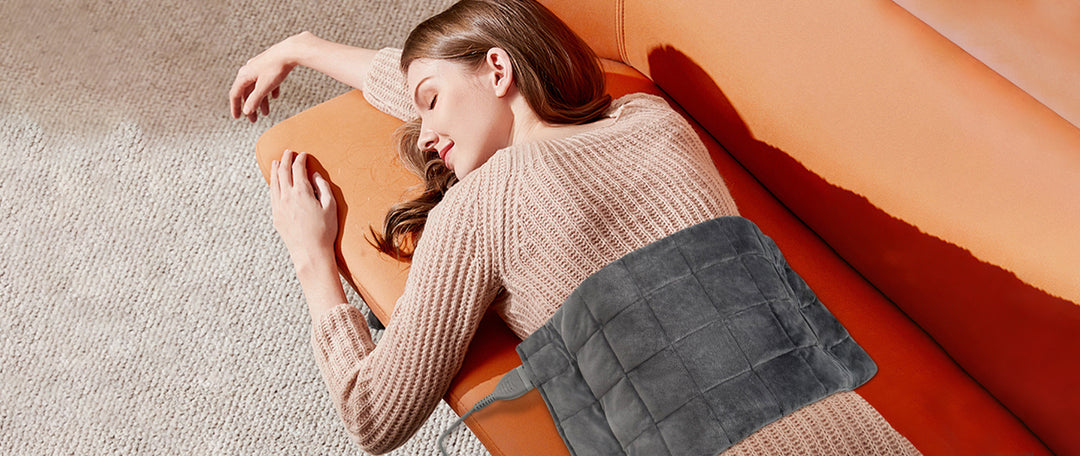
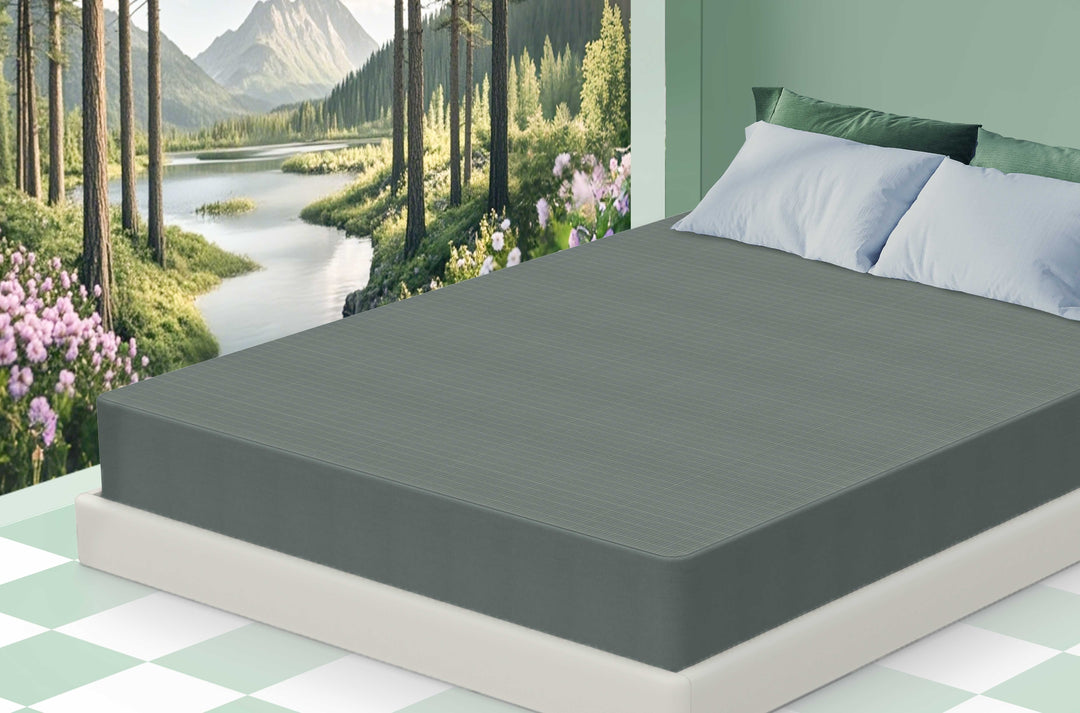



Leave a comment